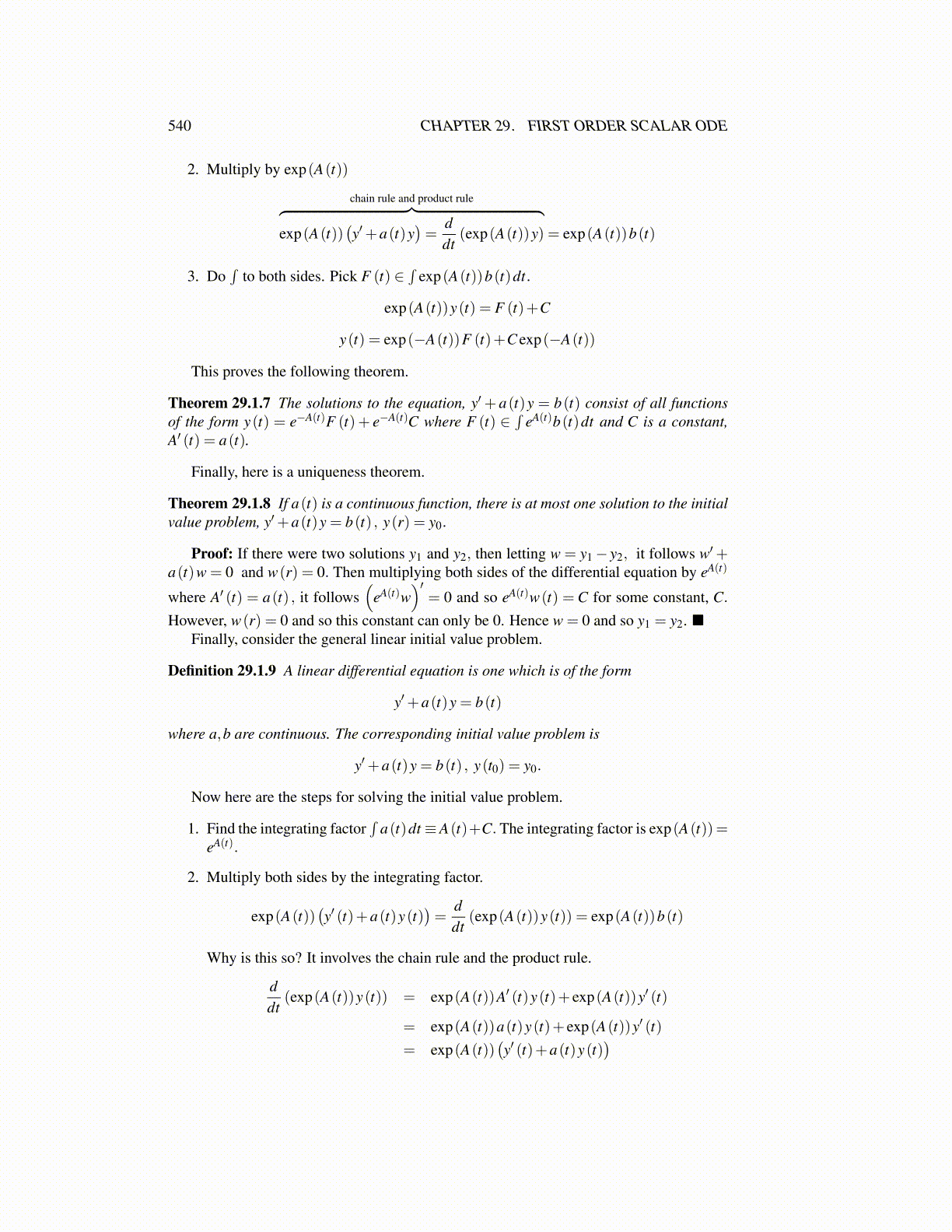
540 CHAPTER 29. FIRST ORDER SCALAR ODE
2. Multiply by exp(A(t))
chain rule and product rule︷ ︸︸ ︷exp(A(t))
(y′+a(t)y
)=
ddt
(exp(A(t))y) = exp(A(t))b(t)
3. Do∫
to both sides. Pick F (t) ∈∫
exp(A(t))b(t)dt.
exp(A(t))y(t) = F (t)+C
y(t) = exp(−A(t))F (t)+C exp(−A(t))
This proves the following theorem.
Theorem 29.1.7 The solutions to the equation, y′+ a(t)y = b(t) consist of all functionsof the form y(t) = e−A(t)F (t)+ e−A(t)C where F (t) ∈
∫eA(t)b(t)dt and C is a constant,
A′ (t) = a(t).
Finally, here is a uniqueness theorem.
Theorem 29.1.8 If a(t) is a continuous function, there is at most one solution to the initialvalue problem, y′+a(t)y = b(t) , y(r) = y0.
Proof: If there were two solutions y1 and y2, then letting w = y1− y2, it follows w′+a(t)w = 0 and w(r) = 0. Then multiplying both sides of the differential equation by eA(t)
where A′ (t) = a(t) , it follows(
eA(t)w)′
= 0 and so eA(t)w(t) = C for some constant, C.
However, w(r) = 0 and so this constant can only be 0. Hence w = 0 and so y1 = y2. ■Finally, consider the general linear initial value problem.
Definition 29.1.9 A linear differential equation is one which is of the form
y′+a(t)y = b(t)
where a,b are continuous. The corresponding initial value problem is
y′+a(t)y = b(t) , y(t0) = y0.
Now here are the steps for solving the initial value problem.
1. Find the integrating factor∫
a(t)dt ≡A(t)+C. The integrating factor is exp(A(t))=eA(t).
2. Multiply both sides by the integrating factor.
exp(A(t))(y′ (t)+a(t)y(t)
)=
ddt
(exp(A(t))y(t)) = exp(A(t))b(t)
Why is this so? It involves the chain rule and the product rule.
ddt
(exp(A(t))y(t)) = exp(A(t))A′ (t)y(t)+ exp(A(t))y′ (t)
= exp(A(t))a(t)y(t)+ exp(A(t))y′ (t)
= exp(A(t))(y′ (t)+a(t)y(t)
)